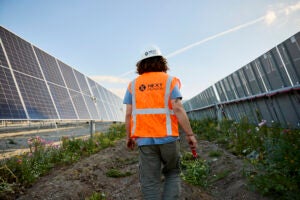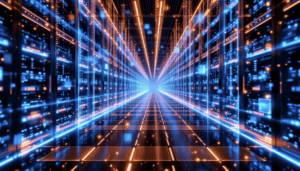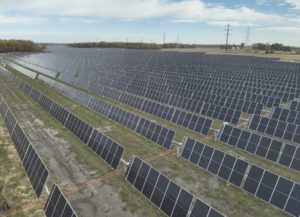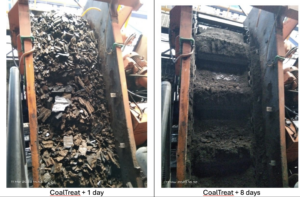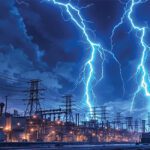The U.S. grid is under unprecedented pressure. Along with increasingly severe weather events, skyrocketing demand from data centers and electric vehicles (EVs) reveals a need for significant investment in a system built for the previous era.
That pressure is only mounting. Over the past 10 years alone, the U.S. has seen twice the number of weather-related outages compared to the previous decade. On the other hand, the thirst for energy keeps increasing, with power demand expected to reach a new high of 4,244-billion kWh in 2026.
COMMENTARY
While many utilities are hardening infrastructure by upgrading poles and wires—a necessary step—brute force solutions alone won’t be enough. To truly future-proof the grid, resilience must be rooted in intelligence via systems that anticipate, adapt, and respond dynamically.
Why Grid Hardening Can’t Wait
Over the next five years, electricity consumption will rise dramatically, in tandem with artificial intelligence (AI) usage, and a resulting spike in demand for data centers is a driving force behind this. By 2030, the U.S. is expected to consume more electricity for data processing than for all other energy-intensive manufacturing goods combined, including aluminum, steel, cement, and chemicals.
EVs have earned a reputation as a greener substitute for gas-powered vehicles by helping slash air pollution and carbon emissions. But they also bring a new kind of pressure to the grid. In 2023, EV charging pushed electricity use in the transportation sector to 18.3 TWh—enough to power approximately 1.7 million homes for a year, per the data provided by EIA. And with battery-powered EVs on the rise, that demand is expected to climb to 131 TWh by 2030. This is equivalent to powering more than 12 million average American homes year-round.
On top of the growing demand on an aged system, the increased frequency and intensity of extreme storms, wildfires, winter storms, flooding, and heat waves are now revealing weak areas in the grid. Weather accounted for 80% of all the major U.S. power disruptions between 2000 and 2023. This figure seems extreme at face value, yet it is the unfortunate reality: Most electricity flows through above-ground infrastructure, including utility poles, transformers, and transmission lines. Consequently, they remain vulnerable to high winds, torrential rain, ice storms, lightning, and heat waves. The American power system was not designed to withstand the extremes of modern-day severe weather.
Building Collaboration Into Long-Term Grid Strategy
Much of the grid infrastructure was built with a 50-to-80-year life span. This has meant that reactive hardening has often been the chosen plan of action for many utility companies. However, piecemeal fixes are prone to missing the most vulnerable areas, passing the problem down the line, and resulting in expensive and time-consuming recurring repairs.
One example of cascading grid failure is the 2003 North American Blackout, which left 50 million people without power across eight U.S. states and Ontario, Canada. It started with small transmission line failures and plant closures brought on by poor communication, software glitches, and operator errors. Overloaded lines and system failures set off a quick cascade, halting subways, water systems, hospitals, and communication networks in seconds.
The incident revealed how localized issues, if not managed with a system-wide perspective, can spiral into full-scale grid collapse. However, with a comprehensive, grid-wide hardening strategy, secondary failures are not only predictable but preventable.
True grid resilience requires more than simply upgrading physical assets; it demands a shift in mindset from patchwork maintenance to long-lasting, system-wide planning. Integrating long-term hardening means designing for the future severe weather, not reacting to the last storm. It also means rethinking how utilities plan and implement infrastructure upgrades, starting with breaking down silos across departments.
Engineering teams may know which components are aging or overloaded, but without input from the finance team, the engineering team could propose solutions that are technically sound but economically unsustainable. This could lead to great reliability, but affordability for ratepayers could take a direct hit. Conversely, finance teams may prioritize low-cost fixes that don’t address underlying vulnerabilities, leading to a seemingly affordable rate for ratepayers until the next weather event, and thus could undermine the reliability of the grid. Operations teams, who have boots on the ground, often understand the system’s day-to-day fragility better than anyone, but they are rarely brought into strategic planning early enough to make a difference.
The price of energy emergencies must be considered in the total cost of ownership, which ultimately sits with the customer. The utility must plan and pay upfront for a smart capital investment in a resilient and reliable grid or pay after the disaster. Post-event costs are typically several orders of magnitude higher, and lives are lost in the most unfortunate cases.
When these functions operate in isolation, long-term hardening efforts are fragmented at best and counterproductive for the various stakeholders at worst. In contrast, when departments align around a shared resilience framework and bridge the gap between the field and office teams, utilities can make smarter, more durable investments. A perfect balance would result in smart capital investment that balances reliability, resilience, and affordability.
Hardening with Intelligence
Physical grid infrastructure hardware has come a long way since its predecessors that were designed and implemented in the 1960s and 1970s. Utility companies now have access to AI-era solutions and physical upgrades.
Utilities are hardening the grid with regionally specific, durable infrastructure. Fire-resistant poles made of steel or composites provide more durability than wood during severe heat events, and covered conductors are replacing bare wires in wildfire-prone regions like California to lower ignition hazards. Raised substations, with waterproofed components, are also being built in coastal and flood-prone areas to keep operations running during storm surges.
Although these physical improvements are vital, grid resilience in 2025 must also use smart solutions. AI, predictive analytics, intelligent automation, and real-time monitoring solve the vulnerabilities hardware alone cannot fix—allowing the grid to predict disruptions, react in real time, and quickly recover when failures happen.
AI-driven analytics and phasor measurement units (PMUs) are disrupting how utilities monitor and manage transmission systems. By collecting data on electrical waves, PMUs enable utilities to identify early indicators of equipment stress, voltage fluctuations, or grid instability. AI and machine learning algorithms improve this capacity by analyzing data sets from sensors and smart meters to forecast equipment failures, isolate faults, and maximize dispatch decisions.
When coupled with drones, AI can also be used to strengthen the grid, as this technology combination is ideal for reaching remote or potentially hazardous locations. For instance, Southern California Edison now uses AI-powered drones for image analysis, surveying 50,000 square miles of high-risk territory.
Moreover, smart segmentation and self-healing networks are changing the way utilities find and handle outages. Self-healing networks can find a fault, isolate it, and reroute power—often in a few seconds. This is possible through the combination of automated switching, real-time data monitoring, and grid-edge intelligence, which reduces downtime and stops network-wide outages.
By integrating distributed energy resources (DERs), such as rooftop solar, battery storage, and local generators, these systems can also maintain service to critical facilities and customers even if disconnected from the main grid. For example, DERs can be sent exactly when and where they are needed. When combined with smart meters and grid sensors, DERs allow a utility to keep hospitals, emergency responders, or critical industrial operations online during a significant outage.
The U.S. grid is faced with a plethora of modern-day difficulties—ones it was not built to manage—and physical improvements are only one part of the answer. Combining the strength of physical upgrades with the intelligence of AI helps the grid not only resist the pressures of rising demand and severe weather but also foresee and adapt to these stresses. Smarter, data-driven grids could pave the way for a more resilient, reliable, efficient, and sustainable power system for the American ratepayer.
—Hari Vasudevan, PE, is founder and CEO of Think Power Solutions and KYRO.


